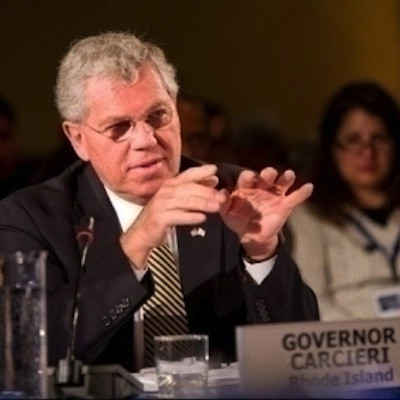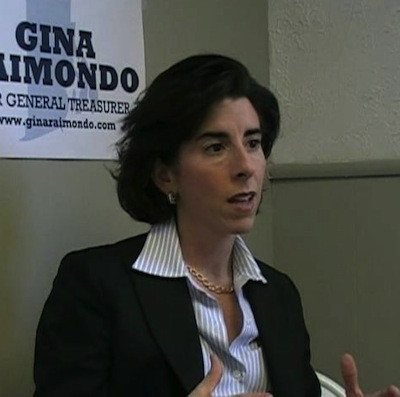Riley: Cranston and Mayor Fung Play the Hand that was Dealt
Tuesday, April 22, 2014
Cranston, Rhode Island has been identified as one of the worst-funded cities in America regarding pensions.
Like many other towns in Rhode Island, for some reason, the town wanted to manage their own defined benefit pension plan for police, fire, schools and municipal employees.
Like most towns that decided to do this, it has been a roller coaster.
GET THE LATEST BREAKING NEWS HERE -- SIGN UP FOR GOLOCAL FREE DAILY EBLASTCranston now has five pension funds it contributes to. The most notorious is the Fire and Police plan known as PFERS. As of last June 2013, this fund was in serious trouble at only 20 percent funded -- making that fund, even worse than Providence.
Cranston owes $800 million less than Providence
However, they owe in retirement pensions, more than $800 million dollars less than Providence does to its to retirees. Further, Cranston OPEB liability is more than $1 billion less than Providence‘s Unfunded Health Care liability of $ 1.2 billion. Cranston has a population of 80,000 people and a per capita income of over $ 28,000. Most national pension surveys look only at the State capitals or towns of significant population when measuring pension debt. So Cranston sits “below the radar” as do West Warwick, Coventry, Woonsocket, Pawtucket et al. That is no comfort to the citizens of those towns who stand to be taxed massively in order to balance the lack of funding with the looming liabilities.
According to the Cranston CAFR 2013, the PFERS plan had assets totaling $58.6 and Accrued Actuarial Liabilities totaling $290 million. This was the result of changing assumptions to 7.5% discount rate it assumed no COLA and used a level dollar amortization of this closed plan for the next 21 years.
Discount rate too high
One obvious problem is the 7.5 percent discount rate is way too high. Only a fully funded pension plan could argue a discount rate of 7.5 percent under GASB 68 and Cranston will next year be forced to use a rate between 5 and 6% percent given its lack of funding.
Moody’s will use between 3 and 6 percent when evaluating the health of this plan in developing their credit ratings. The pension and OPEB liabilities will be weighted at 20 percent or double prior years weightings.
As a result of changing the discount rate to 6 percent, the Cranston Liability in the PFERS system soars to $388 million or an increase of $98 million in unfunded liability.
Additionally the asset valuation summary gives me pause and includes a calculation that reminds me of the misleading statements made by the City of Providence and Mayor Angel Taveras regarding the actual assets held for funding in the pension plan.
Two calculations
Cranston makes two calculations, one that includes discounting future contributions and another that calculates the assets without this forward contribution calculation. Fortunately Cranston uses the lower and much more accurate picture of assets , by dropping the discounted contributions. The discounted forward contributions would have added $ 23 million to the stated assets in PFERS.
Providence was told that this “discounting of future contribution” was a questionable practice, and that should end now by their Actuary Segal. To date, this highly questionable attempt to misstate assets has only been used by Providence. No other city in the country that I have examined has attempted this. Since Cranston calculated this strange number but did not report their assets as such, it is unclear why Cranston has disclosed this number.
PFERS pension funding problem has existed for some time now. Records show that In 2003, unfunded liability in this plan at over $200 million with only $18 million in assets (See chart on page 103).
Liabilities grew
From 2003-2012 liabilities grew from $218 million to $343 million. While assets grew from $18 million to $53 million. This is exactly what will happen again if going forward the plan fails to achieve 7.5 percent compounded for the next 21 years. As the new GASB rules are put in place Cranston‘s ARC will increase significantly putting further strain on all other municipal spending and probably will require property tax increases. I see no warnings about this upcoming crunch from Mayor Fung or the Council but they all know its coming soon, just like Mayor Taveras.
Cranston is much more forth coming in its clarity but the situation is not good and the amount of pension obligation alone, discounted at 6 percent is $310 million, thus far exceeds the 3 percent debt limit on Cranston’s $6.7 billion in assessable property. At some point this “pension obligation” will be just as important as the $72 million in bonded debt currently outstanding. RI state law has set 3 percent or approximately $200 million as the limit on borrowing for the municipality of Cranston.
Cranston does not appear to be a candidate for either Pension bond issuance or a Budget Commission. Cranston also has effectively closed all its defined benefit plans and as such has reduced exposure to new hires being added. All other employees are in DC plans or in the State hybrid systems of ERS or MERS. Cranston will very likely have to raise taxes and cut services over the next few years, as will many other cities but this Mayor and council has dealt pretty well with the cards they have been dealt and the Mayor has been one of the most valuable members of the RI State Pension Commission.
More on Cranston next week and how did PFERS huge liabilities ever happen in the first place?
Michael G. Riley is vice chair at Rhode Island Center for Freedom and Prosperity, and is managing member and founder of Coastal Management Group, LLC. Riley has 35 years of experience in the financial industry, having managed divisions of PaineWebber, LETCO, and TD Securities (TD Bank). He has been quoted in Barron’s, Wall Street Transcript, NY Post, and various other print media and also appeared on NBC news, Yahoo TV, and CNBC.
Related Slideshow: Timeline - Rhode Island Pension Reform
GoLocalProv breaks down the sequence of events that have played out during Rhode Island's State Employee Pension Fund reform.
Related Articles
- Guest MINDSETTER™ Mike Riley: Right-to-Work is Right for Rhode Island
- Michael Riley: Rhode Island’s Potential Pension Nightmare
- NEW: Riley Concedes, Warns RI Headed for ‘Disaster’
- Hinckley & Riley Struggle in Latest Poll
- Michael Riley: Taveras and Polisena No-Shows at Pension Commission
- NEW: Riley Releases New Attack Ad on Langevin
- Langevin & Riley Battle in First Debate
- Michael Riley: The Harsh Reality of the Pension and OPEB Crisis
- Riley Charges Langevin is Guilty of Playing “Rhodopoly”
- Michael Riley: Analysing A Crisis
- Michael Riley: The Municipal Pension Study Commission Is A Failure
- Riley: Providence Debt is Epic Disaster, Other RI Towns Even Worse
- Michael Riley: Is the RI Pension Commission Making Up Numbers?
- Michael Riley: The Pension Study Commission Needs To Face Reality
- Riley: RI Ignoring The Financial Disaster Staring It In The Face
- Michael Riley: Moody’s Lowers the Bomb…Look Out Rhode Island
- Michael Riley: These RI Cities + Towns Could Be Next in Bankruptcy
- SUPER POLL: Jim Langevin or Mike Riley
- Michael Riley: Providence Vying for Worst Funded City in America
- Michael Riley: West Warwick Is Headed For Disaster
- Voter Guide: Mike Riley Profile (2nd District)
- Guest MINDSETTER™ Mike Riley: Rhode Island is More Conservative than You Think
- Michael Riley: RI Municipal Pension Study Comm. Is in Failure Mode
- NEW: Riley Blasts Langevin for Skipping WPRO Debate
- Who Won the 2nd Congressional Debate: Riley or Langevin?








































